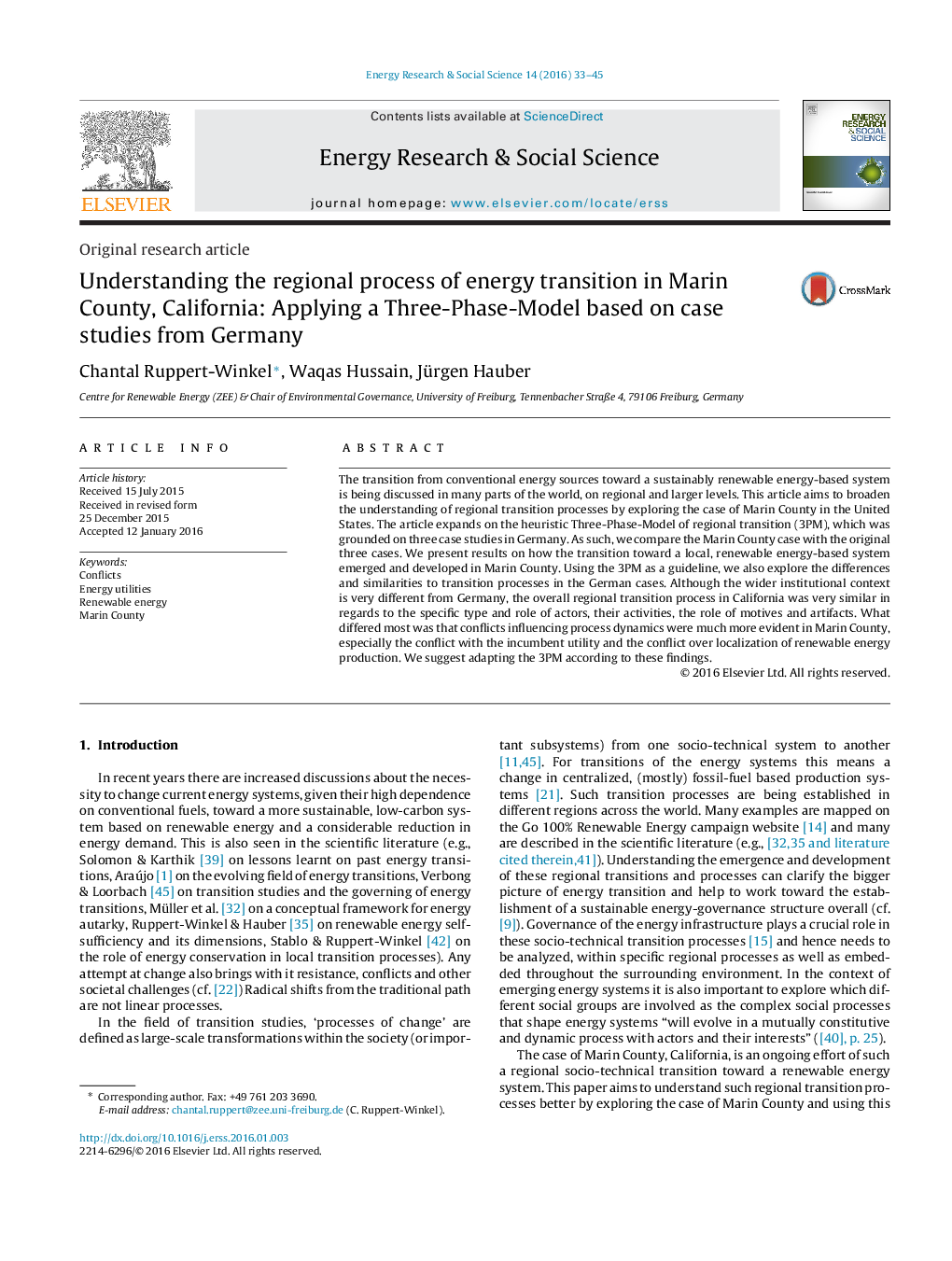| Article ID | Journal | Published Year | Pages | File Type |
|---|---|---|---|---|
| 6558201 | Energy Research & Social Science | 2016 | 13 Pages |
Abstract
The transition from conventional energy sources toward a sustainably renewable energy-based system is being discussed in many parts of the world, on regional and larger levels. This article aims to broaden the understanding of regional transition processes by exploring the case of Marin County in the United States. The article expands on the heuristic Three-Phase-Model of regional transition (3PM), which was grounded on three case studies in Germany. As such, we compare the Marin County case with the original three cases. We present results on how the transition toward a local, renewable energy-based system emerged and developed in Marin County. Using the 3PM as a guideline, we also explore the differences and similarities to transition processes in the German cases. Although the wider institutional context is very different from Germany, the overall regional transition process in California was very similar in regards to the specific type and role of actors, their activities, the role of motives and artifacts. What differed most was that conflicts influencing process dynamics were much more evident in Marin County, especially the conflict with the incumbent utility and the conflict over localization of renewable energy production. We suggest adapting the 3PM according to these findings.
Related Topics
Physical Sciences and Engineering
Energy
Energy (General)
Authors
Chantal Ruppert-Winkel, Waqas Hussain, Jürgen Hauber,
